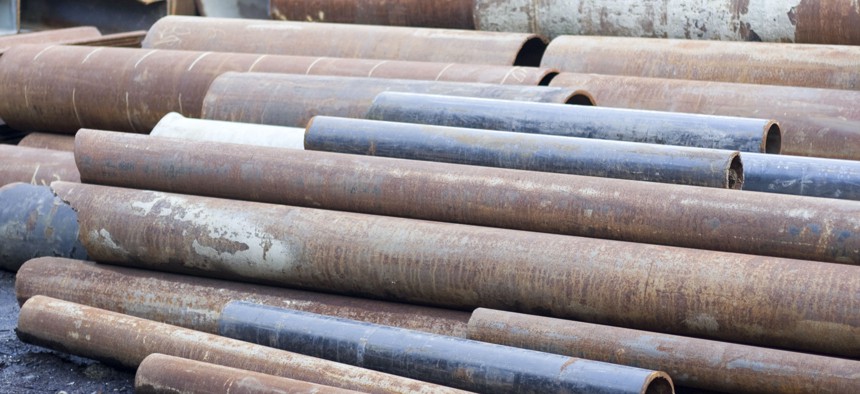How Much Will it Cost to Replace All Lead Water Pipes in the U.S.?

iStock.com/carterdayne
The initial price is high, but the public health and economic benefits outweigh the costs in the long run, according to research by the Hutchins Center at the Brookings Institution.
The American Jobs Plan includes $45 billion to replace lead pipes and service lines across the U.S., and according to research by the Brookings Institution, that should be enough to cover the costs.
“A back-of-the-envelope calculation based on EPA’s estimate of average replacement cost per line ($4,700) and assumption of 6 to 10 million lead service lines across the country suggests the cost could range from $28 billion to $47 billion, putting (President) Biden’s $45 billion near the top of that range,” wrote the report’s authors, David Wessel, director of the Hutchins Center on Fiscal and Monetary Policy at the Brookings Institution, and research assistant Sophia Cambell.
Despite the high cost, the researchers reference a 1987 Environmental Protection Agency cost-benefit analysis of reducing the amount of lead permitted in drinking water by 60%, which found that the benefits of reduced exposure outweighed the costs of the policy by about four to one, even without accounting for a number of health benefits that were difficult for the EPA to monetize.
The Brookings report also references a 2019 Minnesota cost-benefit analysis for removing lead from all drinking water in the state. The analysis estimates that the pipe removal would cost $1.5 billion to $4.1 billion over 20 years but the benefits—including “mental acuity and IQ” improvements and the “resulting increases in lifetime productivity, earnings and taxes paid”—would range from $4.2 billion to $8.5 billion.
In addition, the report cites the Environmental Defense Fund’s estimate that each full lead service line replaced would yield $22,000 in societal benefits from reduced mortality from cardiovascular disease alone, or a return of more than $3 per dollar invested.
It is stated the only permanent and 100% effective solution to remove lead from water is a full lead service line replacement. In addition to the expensive, the report discusses the challenges that lay ahead if a plan to remove lead pipes were put in place.
For example, the paper mentions Madison, Wisconsin’s success in replacing all lead service lines in 2001. The project removed 8,000 pipes and took 11 years at the cost of $15.5 million. However, the city received significant pushback from homeowners and approval for the initiative from regulators and lawmakers took years.
To help solve the cost issue for private customers, the paper refers to state and local governments offering grants and forgivable loans for pipe replacement. Also, governments can loosen restrictions to allow water utilities to raise rates to fund improvements to private portions of service lines.
Water pollution is a leading environmental concern among Americans, polls indicate, and serious issues surrounding lead-contaminated water continue to plague state and local governments.
To see more details about the research click here.
Brent Woodie is an associate editor at Route Fifty.





